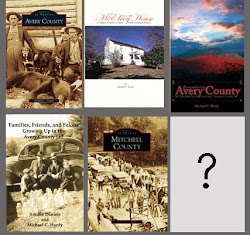As many of you know, I’ve been working on a book about the 58th North Carolina Troops. About half of the men in this regiment came from the Toe River Valley area. On May 4, 1864, up to thirteen men from this regiment were executed for desertion. Here are some of my notes about these men.
I’ve been able to identify thirteen men from the 58th North Carolina who were court martialed and ordered to be executed for desertion on May 4, 1864. Those thirteen were as follows: Jacob Austin (Co. E); Alford Ball (Co. G); William R. Byers (Co. G); Reuben Dellinger (Co. A); Asa Dover (Co. F); Joseph Gibbs (Co. C); Jesse Hase (Co. A); Wright Hutchings (Co. F); George McFall (Co. K); Gordon Morrow (Co. H); Michael Ward (Co. D); Hiram Youngblood (Co. F); E. H. Younts (Co. H).
Of the thirteen, George Morrow was pardoned the day before the execution. William Byers’s fate is not exactly known, only that he died prior to September 1, 1864. The same is true for Dellinger and Hase. It is not clear that they were executed. Family history states that Dellinger died during the war.
The 58th NCT came from the counties of Ashe, Watauga, Mitchell, Yancey, Caldwell, and McDowell, with smaller groups of men from Wilkes, Yadkin, and Iredell Counties. Of the nine who were executed, one (Austin) appears to be from Union County; two were from Rutherford County (Hutchings and Youngblood, along with Byers); and one was from York County, South Carolina (Dover). Younts’s record simply states that he enlisted in Athens, Georgia. Hase’s record states that he enlisted in Hamilton or Greene County, Tennessee.
About half of the condemned men had joined the regiment recently. Austin - December 25, 1863; Byers - October 25, 1863; Dover - August 20, 1863; Hase - October 20, 186[3]; Hutchings - October 6, 1863; Youngblood - August 14, 1863; and, Younts - December 16, 1863. Morrow, who hailed from Caldwell County, had been in the service since May 15, 1862, joining Company I, 26th NCT, then joining Vance’s Legion on May 23, 1862.
Each of them had deserted just once, save Ball, who was a sergeant, and Ward, a private. They both deserted twice. Gibbs was the youngest - 19 or 20. Hutchings was the oldest - 44 or 45. Dellinger joined what would become the 58th North carolina Troops in late 1861. He transferred to the 5th Battalion, North Carolina in June 1862, went awol, then rejoined the 58th NCT. He deserted from the 58th NCT on August 20, 1863.
As of today, I only know that Ward, Hase, Gibbs, and maybe Byers had children.
There were probably two others executed that day. Christopher Ledford (Company C) and James M Randal (Company A), 60th North Carolina Troops.







.jpg)









